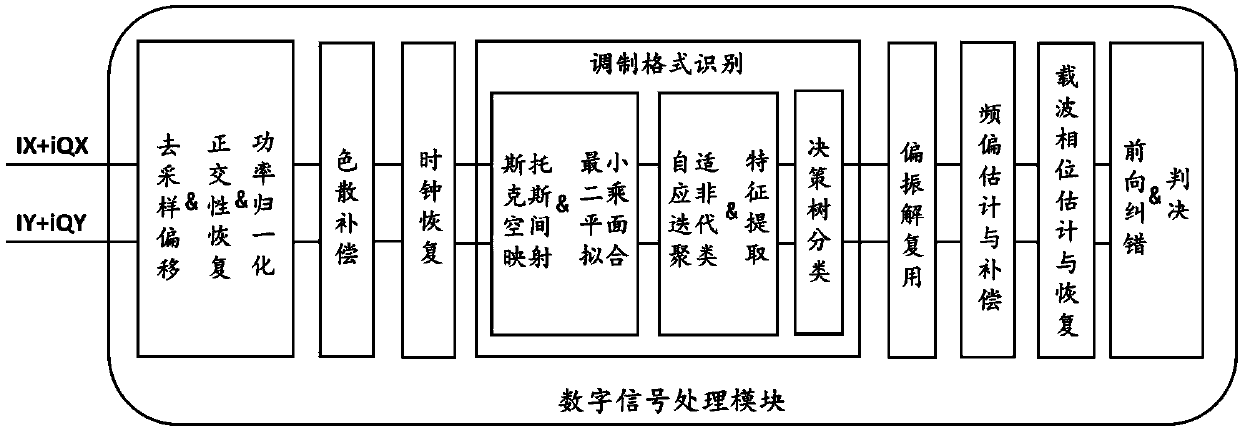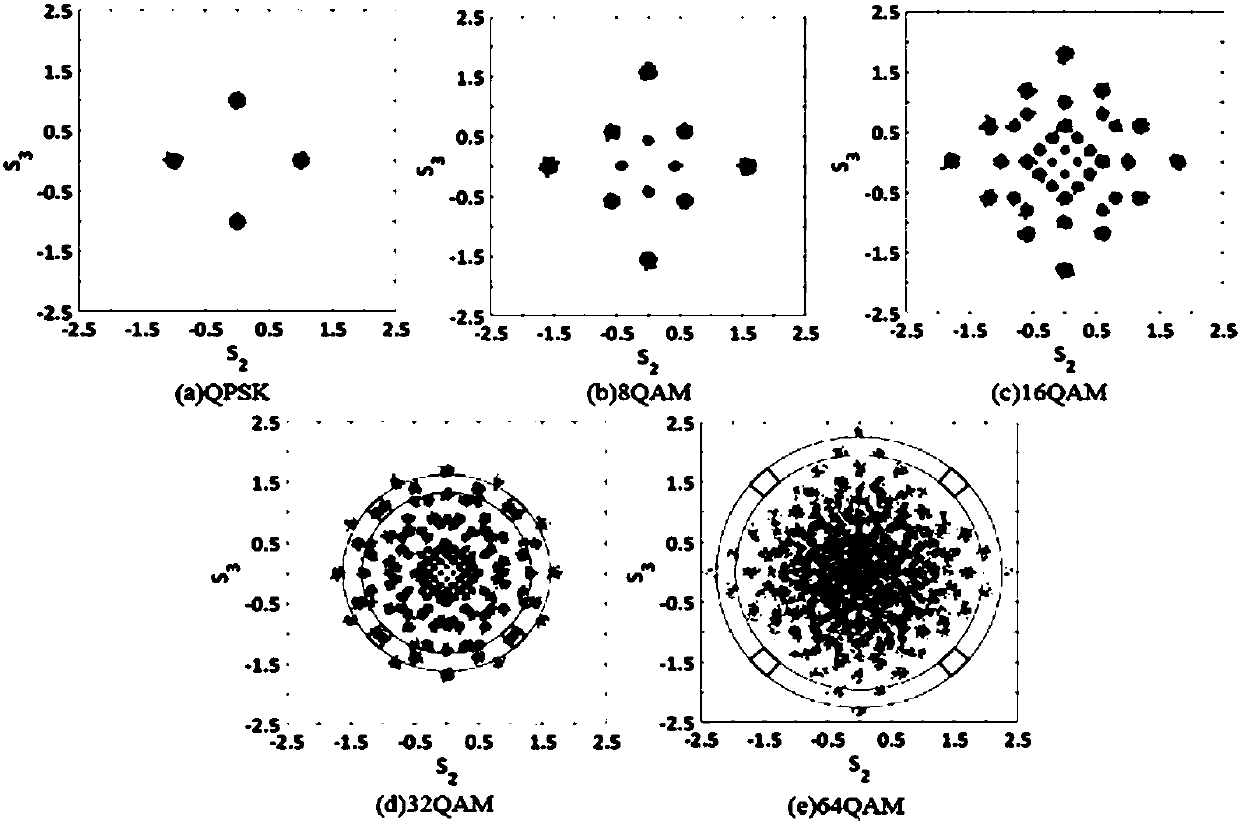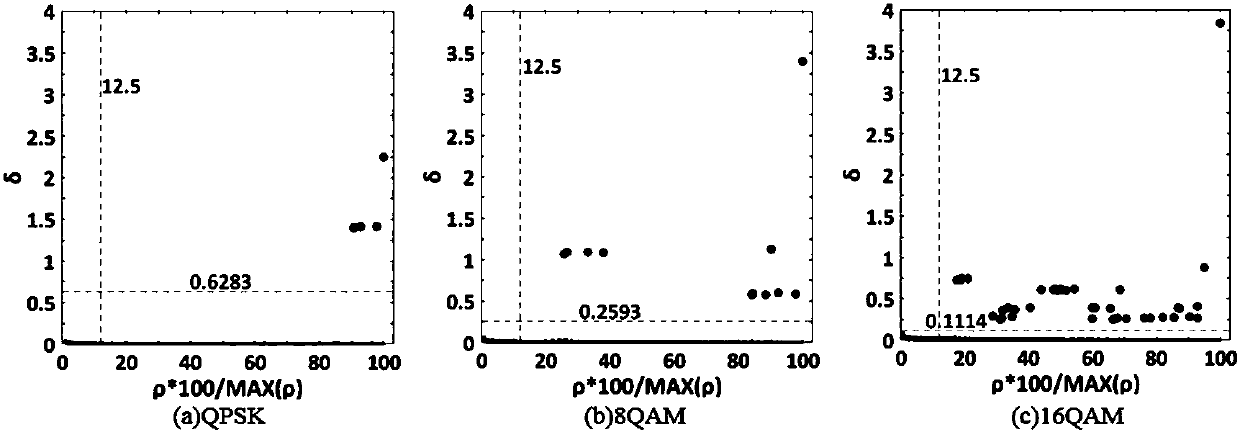Stokes space coherent light modulation format recognition method based on self-adaptive non-iterative clustering
A modulation format and identification method technology, which is applied in the research field of coherent optical communication systems, can solve the problems of low computational complexity, difficult high-precision identification of high-order modulation formats, and high computational complexity, and achieves low computational complexity and high recognition. The effect of accuracy and fewer calculation steps
- Summary
- Abstract
- Description
- Claims
- Application Information
AI Technical Summary
Problems solved by technology
Method used
Image
Examples
Embodiment Construction
[0033] In order to make the technical means, creative features, goals and effects achieved by the present invention easy to understand, the following will further explain how the present invention is implemented in conjunction with the accompanying drawings and specific embodiments.
[0034] figure 1 A schematic diagram of the modulation format identification method provided by the present invention, such as figure 1 As shown, the method provided by the present invention has two steps, which are respectively the training phase and the identification phase, specifically as follows:
[0035] 1. Training stage
[0036] 1) Stokes space mapping and least squares plane fitting
[0037] Collect multiple sample signals of {PM-QPSK, PM-8QAM, PM-16QAM, PM-32QAM, PM-64QAM} modulation formats, and map the sample signals of different modulation formats to Stokes space. Among them, the sample signal can be expressed as two orthogonal polarization signals of X and Y, and the specific form...
PUM
 Login to View More
Login to View More Abstract
Description
Claims
Application Information
 Login to View More
Login to View More - R&D
- Intellectual Property
- Life Sciences
- Materials
- Tech Scout
- Unparalleled Data Quality
- Higher Quality Content
- 60% Fewer Hallucinations
Browse by: Latest US Patents, China's latest patents, Technical Efficacy Thesaurus, Application Domain, Technology Topic, Popular Technical Reports.
© 2025 PatSnap. All rights reserved.Legal|Privacy policy|Modern Slavery Act Transparency Statement|Sitemap|About US| Contact US: help@patsnap.com



